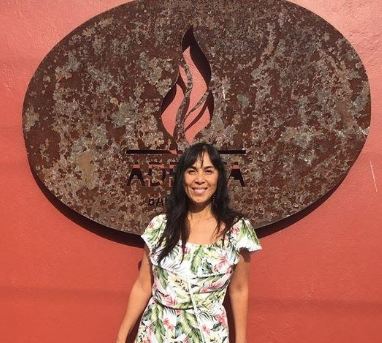Like Bringing Ice to Eskimos-
Bringing Tapatio Hot Sauce to Guadalajara
While my husband was having a “schvitz” at our local temescal (native sweat lodge), he met a man who knew of Mexicans who went to the United States and made it big-time in Mexican food manufacturing. Having gone to high school in California that was “colonia” adjacent, I had come to my love of Mexican-American food naturally and honestly. As my husband and I are of the same “Oye Come Va” era, he is also nostalgic for the Mexican food of our Brady Bunch past.
Here is a partial list of Mexican-American food that I “mule” back from the US to my casita in the sierra that is just like our mythical mamacita would have made.

- Crispy corn tortilla shells, Taco Bell Style. I have to hand- carry these as they are fragile. I fill them like they did in our school cafeteria: with ground beef. Their brittle crunchiness is music to my husband’s ears because he loves audio accompaniment to his meals. Taco Tuesday around here is a semi-ecstatic occasion.
- Canned red menudo with homily and tripe. When I have a cold, this is my Mexican penicillin. Somehow in my nightie I am able to cut and sprinkle upon its micro-wave readiness oregano, chopped cilantro and onion, dried chilies and lime. I have had canned food confiscated from me at the airport in Cuidad Juarez, so I live in fear that my canned menudo and I may one day be separated.
- Tapatio salsa picante (hot sauce). The nickname for people who live in Guadalajara but come for a weekend to their lake house or to visit the town of Chapala or Ajijic is “Tapatio,” as in “There sure is a lot of traffic on the careterra when the Tapatios are in town!” I don’t mess around with other varieties of hot sauce anymore. We are brand loyal to Tapatio hot sauce and I brought back a giant bottle from El Paso, Texas as I did three boxes of the aforementioned crispy taco shells.
- Giant flour tortillas for burritos. We were in downtown San Clemente, California the other month when by the murals on the restaurant I was able to identify the owner’s Mexican hometown. Mexican workers sat outside on the benches eating food instructed by the owner’s mother, who sat in the patio receiving the neighbors’ and workers’ respectful regards. The owner told us that 30 years ago, he had never had a burrito. Another US restaurateur told us he had to teach his Mexican kitchen help how to make a burrito. The first step is: get a flour tortilla the size of a cocktail table. Or, as we did one time, bring back an entire burrito from San Diego that weighed over eight pounds to eat after we had landed. We had muled not a burrito but a burro.
- Canned enchilada sauce. I have the secret to Mexican cooking. You must have your mother, aunts and sisters with you in the kitchen. The cooks here in Mexican restaurants are all blood-related. You need teamwork to put out the labor-intensive meals that are the hallmark of Mexican cuisine. I thank the Virgin of Guadalupe that red enchilada sauce processed into air-tight containers was invented. The kind of enchiladas we like can be found on any US neighborhood Mexican restaurant combination plate along with a tamale and rice and beans. I have made enchilada sauce from dried chilies out of necessity and cravings, and although I deserve a medal for valiant effort, it is not worth the sink full of grinders, frying pans and strainers and the stove that is splattered and stained.
- Ground chili powder. This is easier to find now than it was three years ago, when we first arrived and only whole, dried chilies were available in the stalls. I used to go to a little tienda (store) in Jocotopec (a nearby village) where I could only find one type of chili that was fine enough to not need straining. It took me two years to find other types of powdered chili and I swear, I found them in Mexico in the “international” section on the bottom shelf at Soriana (a Mexican-owned market) in Guadalajara. I bought one of each and used them sparingly. But because my palate needs hot spice and lots and lots of a variety of spices, when we go back to the US, I buy heaping handfuls of powdered California chili, New Mexico chili, paprika, and cayenne pepper, so I can dash away with reckless abandon. I also nab Chinese chilies in oil, Korean chili paste and super-hot Indian chili powder. I buy the giant size bottles of the chili medley for American-style chili con carne and use it as a cheat for my salsa roja.
- Dark chocolate. In Mexico they keep chocolate under lock and key (literally). They are in those tamper-proof cases that need a store associate to undo. Chocolate is expensive, rare and sometimes not even that good. Remember, friends, chocolate was first cultivated here in Mexico. And it still seems to be a treat only for the Aztec gods. I bring bricks of dark and bittersweet chocolate from Trader Joe’s in the US and make chocolate desserts that only the few and privileged have tasted here. For a friend’s party that was also a pre-birthday celebration, I made a lemon cake for the fiesta and a near flourless cake for her gift that she could take home. Three times I asked her if she wanted her guests to have a little taste of the chocolate cake, but knowing and missing my triple chocolate cookies, she decisively refused each time to relinquish any to the uninitiated others; she wanted to take the entire dessert home for herself. But I blithely gave them all a portion, promising to figure out how I made the before mentioned cookies that she had really desired. Previously, a different friend said of the same chocolate cookies I gave to him that he cut them into little pieces to extend the pleasure, which for him was more than romantic.
- Corn and cornmeal. Another gift from the geniuses of Mexican agricultural is corn. We never eat corn on the cob that is grown here because it is so darned hard! At the weekly outdoor market, I look for packaged corn that is imported from the US. We like sweet and soft corn, like they sell at the roadside stalls up the canyon from where I used to live in Santa Clarita, California, during the summertime. I can’t bring fresh produce into Mexico, but I do bring cornmeal for cornbread and for my fresh pear polenta pie. I also throw it beneath the bread I make before I put it in the oven. Mexican masa is made from corn and is used for corn tortillas or the delicious atole drinks, but is not the same. I once heard that you can get cornmeal here, but it is made for chicken feed and not great for baking.
I made this list in slight fear that others around me here would oppose my loosey-goosey interpretation of Mexican cooking and raise their wooden spoons against me. (I have been bruised on Youtube for a US bought slow cooker for my bean cookery because it was not locally sourced.) If I can withstand grease splatters, I can withstand their righteous commentary. That’s me. I’m a hybrid rebel. It rankles me to live without, especially when my dominating appetite dictates. When they inspect my gourmeteria-like suitcase at customs, I have to defend my pantry against the inspection guards, so I am ready to do it on Facebook, too.
I have learned from living in Mexico, if I want to keep my culinary traditions and keep expanding my repertoire of good things from my kitchen, I have to start from scratch, improvise, search relentlessly, go without, or bring it back in my suitcase. My husband groans every time I request extra luggage on our airplane manifest to fit my grocery shopping. But then I present him with something that tastes like it did when he was studying for his Business Econ exams at UC Santa Barbara all the levies are forgiven, all the strained shoulder muscles are allayed and forgotten under the wizardry of an Old El Paso Super Stuffer taco with Tapatio hot sauce licked from our fingers.
Note: When you are moving your household goods to Mexico on a menaje de casa (import tax free), you cannot bring food or spices on your shipment, but you can bring your sauce-splattered Mexican cookbooks, lovingly used comals, well-seasoned parillas, indispensable burr spice grinders, high-intensity blenders, well-worn mortars and pestles to outfit your little cucina Mexicana.




